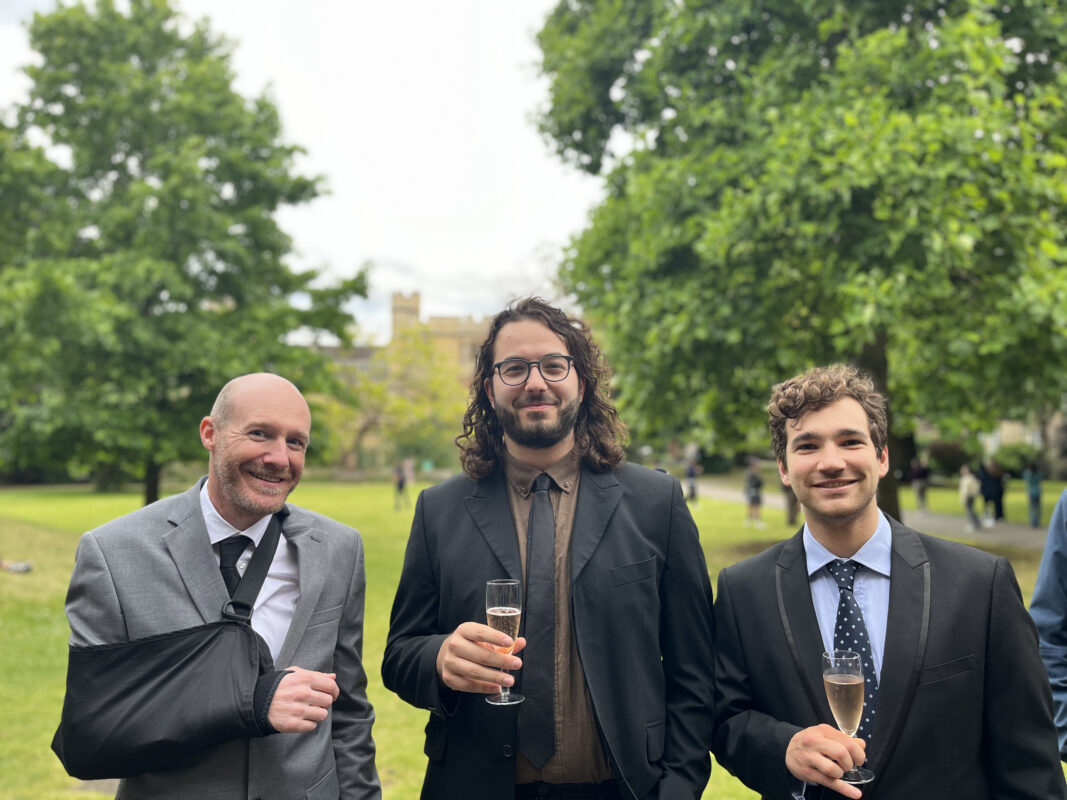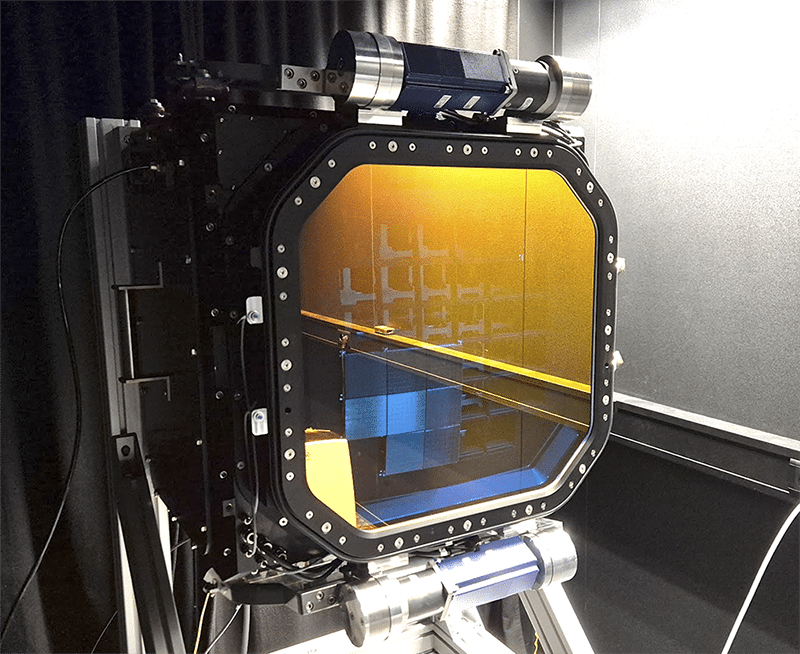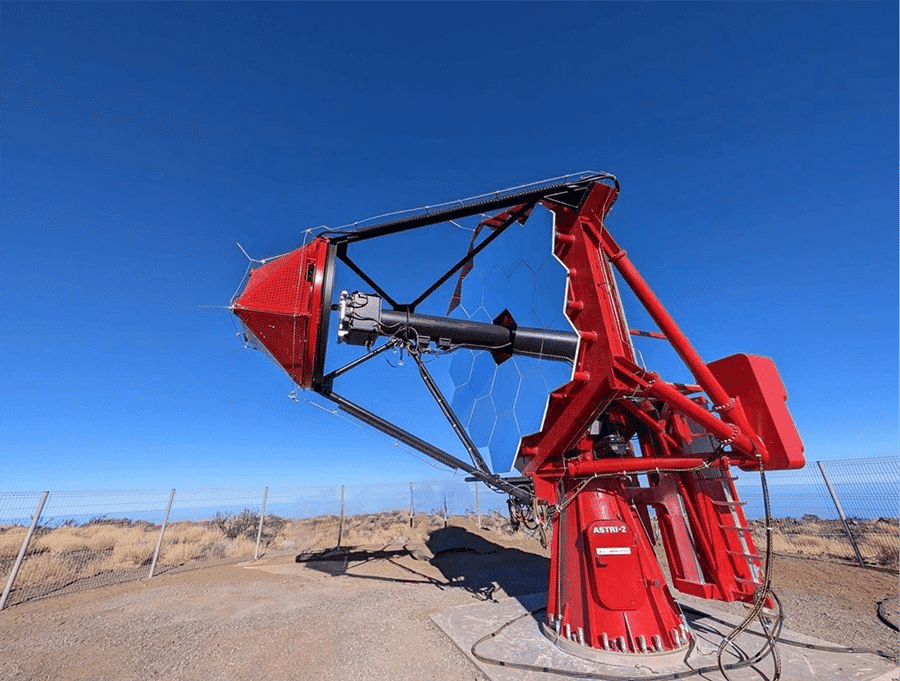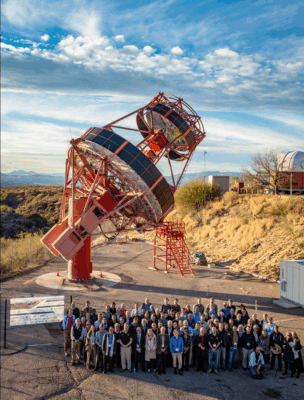This story was adapted from the WashU and CTAO releases for the University of Wisconsin–Madison.

A team of researchers and engineers from the University of Wisconsin–Madison and Washington University in St. Louis has been awarded a $3.9 million grant from the U.S. National Science Foundation to build and install gamma-ray cameras for the Cherenkov Telescope Array Observatory (CTAO). The award will provide light detectors for the Small-Sized Telescopes (SSTs) located at the CTAO-South site as well as the readout and control electronics required to operate them. They will collaborate with teams across the world as part of the CTAO SST Collaboration.


Justin Vandenbroucke, a professor at the Department of Physics and Wisconsin IceCube Particle Astrophysics Center (WIPAC) at UW–Madison, is the co-principal investigator of the project with Manel Errando, an assistant professor of physics at Washington University in St. Louis. Vandenbroucke’s team will lead integration, calibration, and testing of the readout electronics.
“By detecting light trillions of times more energetic than what we can see with our eyes, CTAO will discover phenomena powered by black holes, exploding stars, and maybe even dark matter,” says Vandenbroucke. “The SSTs of CTAO-South will have a particularly good view of the inner Galaxy, where these phenomena are abundant.”
The participation of researchers from UW–Madison and WashU is significant because it will give astronomers and physicists from across the U.S. a chance to contribute to the discoveries that CTAO will enable. The U.S. members have been deeply involved in the CTAO project since its inception more than a decade ago. “The U.S. teams have been an important supporter of the CTAO throughout its history,” said CTAO Director General Stuart McMuldroch. “We are grateful for their various contributions and look forward to continuing and expanding our work together in this new phase.”
Designed to record images at a rate of one billion frames per second, the cameras, with high-speed sensors and electronics, will be able to detect gamma rays from cosmic sources such as pulsars, clusters of young stars, the Milky Way’s central black hole, or fast jets from giant black holes in distant galaxies. The new observations will also help identify the sources of high-energy cosmic rays, which send particles hurtling at tremendous speeds across the Galaxy and even across the Universe.

According to Vandenbroucke, “Instruments such as HAWC and LHAASO have recently discovered that our Galaxy is full of energetic objects producing light up to a quadrillion times beyond what we can see with our eyes, and that is mostly looking at the outer parts of the Galaxy due to the instrument locations in the Northern Hemisphere.” As Errando explains, “Because of the tilt of the Earth in relation to the plane of the Milky Way, observatories in the Southern Hemisphere have a more direct view into the very center of the Galaxy.”
The cameras will be installed on CTAO SSTs, the smallest of the three classes of telescopes the Observatory will deploy, designed to detect some of the highest energy photons in the Universe. These telescopes are optimized to provide unprecedented sensitivity to gamma rays between 5 and 300 teraelectronvolts. Both the cameras and telescopes follow the same conceptual design as the Schwarzschild-Couder Telescope (SCT), a larger telescope led by U.S. researchers supported by the NSF. The two telescope sizes each have two mirror dishes in order to measure the gamma rays with better precision than traditional one-mirror designs. The UW–Madison and WashU groups played leading roles in developing the larger camera and will bring that expertise to the new camera development. Vandenbroucke’s team has worked on the construction and integration of the SCT camera for the last 12 years. Assembly and testing of the camera was completed in Madison in spring 2018, followed by installation of the camera and inauguration of the telescope in 2019 and its detection of the Crab Nebula in 2020. UW–Madison undergraduate and graduate students have played essential roles in the project.
